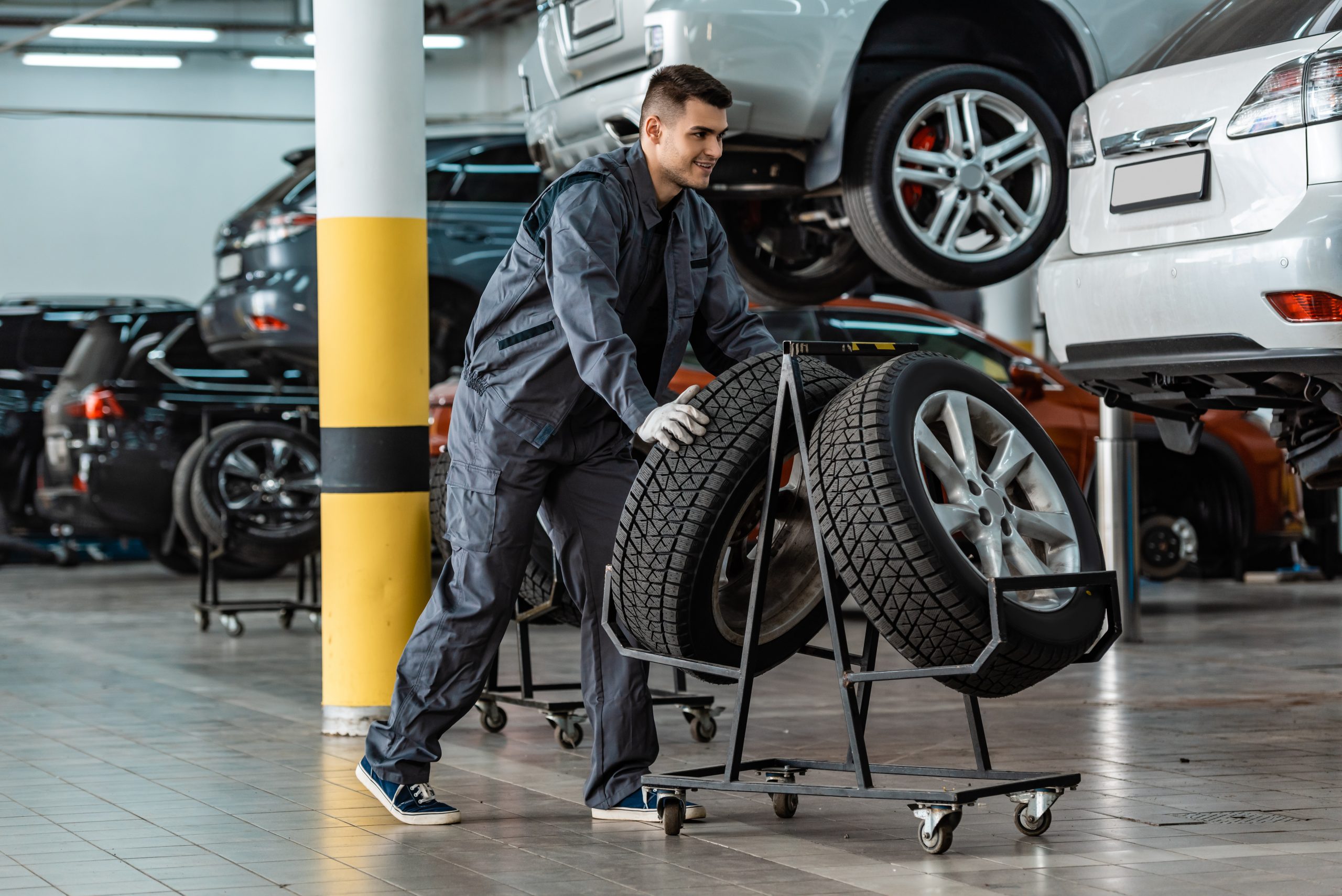The Scientific Research Behind Tire Repair Service and Security
When it concerns the intricate world of tire maintenance and security, there exists a world of science that usually stays undetected by the typical driver - morris tire. The products that compose a tire, the effect of tire pressure on overall safety and security, the ramifications of tread wear, the detailed characteristics of tire traction, and the often-overlooked value of proper wheel positioning all play crucial duties in making sure an automobile operates safely and efficiently. As we navigate via the intricacies of tire repair and safety, it becomes evident that a deeper understanding of these scientific principles is not only helpful but essential for each chauffeur on the roadway
Tire Make-up and Functionality
What products make up the composition of tires, and exactly how do these elements contribute to their capability on the roadway? Steel cables are integrated to improve the tire's toughness and aid it preserve its shape under various roadway problems.
The rubber compounds provide grasp and grip, permitting the tire to stick to the roadway surface and supply stability throughout acceleration, braking, and cornering. Overall, the mindful option and combination of these products ensure that tires can carry out successfully and securely on numerous roadway surfaces and conditions.
Influence of Tire Stress on Safety
On the other hand, overinflated tires have less call with the road surface area, lowering grip and triggering uneven wear on the tire footsteps. Effectively inflated tires additionally play a critical role in gas effectiveness, as underinflated tires can enhance rolling resistance, leading to decreased gas mileage. Consistently examining and preserving the appropriate tire stress not only makes certain security yet also prolongs the lifespan of the tires, conserving on substitute costs in the lengthy run.
Tread Wear and Its Effects
Appropriate surveillance of tire walk wear is vital for ensuring optimum efficiency and security when traveling. As tires put on down, the depth of the tread lessens, lowering the tire's capability to preserve grip, particularly in unsafe or wet problems. The step pattern and deepness play an essential function in funneling water away from the tire to stop hydroplaning and preserving grasp on the roadway surface area.
Indicators of too much walk wear consist of bald areas, unequal wear, and the look of wear indications. Bald spots indicate localized wear, which can result in instability and enhanced risk of blowouts. Irregular wear may suggest problems with tire rising cost of living, suspension, or placement components. Wear indicators are developed into the tire step and come to be visible when the step deepness gets to a certain nadir, indicating the requirement for instant substitute.

Recognizing Tire Grip Characteristics
Keeping an eye on tire walk wear not only guarantees ideal efficiency and safety and security but likewise straight impacts the traction dynamics of the tires on different road surfaces. Tire grip is an important aspect of vehicle handling and security, as it determines the hold between the tires and the road. Traction characteristics vary relying on road conditions such as completely dry sidewalk, wet roadways, snow, or ice.

Recognizing tire traction characteristics is necessary for drivers to adjust their driving behavior according to the road problems. morris tire service. Regularly examining tire step depth and condition can substantially boost traction performance, ensuring much safer driving experiences across numerous surfaces
Relevance of Proper Wheel Positioning
Making sure right wheel positioning plays a vital role in optimizing vehicle performance and extending tire longevity. Appropriate wheel alignment entails readjusting the angles of the wheels to supplier specs, guaranteeing that they are perpendicular to the ground and alongside each other. When placement is off, it can bring about uneven tire wear, decreased fuel efficiency, and endangered handling.
One of the vital advantages of maintaining correct wheel placement is improved managing and security. Misaligned wheels can trigger the car to draw away, impacting guiding control and overall driving experience. Furthermore, proper positioning advertises also tire wear, preventing early tire replacement and saving money on maintenance prices in the future.

Verdict
In final thought, the scientific research behind tire repair service and safety and security is essential for preserving vehicle efficiency and guaranteeing vehicle driver safety and security. By recognizing tire make-up, pressure, walk wear, grip characteristics, and wheel alignment, drivers can protect against accidents and prolong the life-span of their tires. Proper upkeep and normal assessments are essential for optimum tire performance and total automobile security. By complying with these standards, drivers can drive with confidence knowing that their tires are in excellent problem.
The materials that make up a tire, the effect of tire pressure on overall security, the ramifications of tread wear, the elaborate characteristics of tire traction, and the often-overlooked relevance of appropriate wheel placement all play crucial duties in making certain a vehicle runs securely and effectively. On the other hand, overinflated tires have less contact with the roadway surface, decreasing traction and causing unequal wear on the tire footsteps. Consistently inspecting and keeping the right tire pressure not just guarantees safety however additionally prolongs the lifespan of the tires, conserving on replacement prices in tire tracks morris il the lengthy run.
Keeping track of tire step wear not only makes certain optimal efficiency and security but likewise straight impacts the grip dynamics of the tires on different roadway surfaces. Tire grip is a crucial aspect of automobile handling and security, as it determines the hold between the tires and the road.